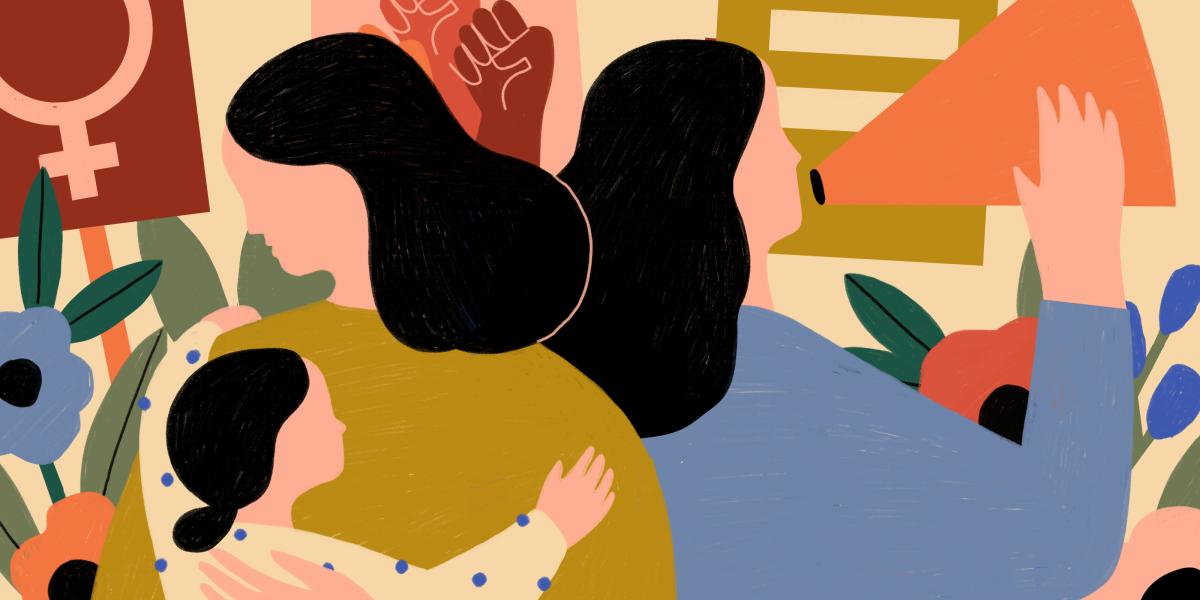Advancing Reproductive Justice for All
My commitment to reproductive justice only deepened after I became a mom.
My daughter, Frances, just turned 1. I am incredibly grateful that she’s a healthy, happy baby—and that I had a remarkably smooth pathway to welcoming her into the world.
Before I became pregnant, I spent many years avoiding pregnancy through use of effective contraceptives, allowing me and my husband to complete graduate degrees, establish our careers, and get to a place where we felt equipped to become parents. When we were both ready, I went to my OB-GYN to have my IUD removed and conceived within a few months. My pregnancy and delivery were uncomplicated, and we watched with delight as Frances thrived during her first year.
Having studied sexual and reproductive health issues for over a decade, I know how fortunate and empowered I am to have been able to achieve my reproductive goals when I wanted, with minimal barriers. For many women and people of expansive gender identities, this is not the case.
Globally, 172 million women wish to avoid pregnancy but are not using contraception, risking an unintended pregnancy. Those with fewer financial resources, less education, and who live in rural areas are less likely to be using contraception. In the U.S., nearly half of all pregnancies annually are unintended, with Black and Hispanic women and those living in poverty experiencing a disproportionate share.
Contraceptive barriers are only one set of challenges that individuals may encounter in exercising their reproductive self-determination. Some are forced into (or out of) contraceptive use or pregnancy through reproductive coercion from an intimate partner. Approximately 180 million people worldwide experience infertility, suffering myriad negative social, psychological, and financial repercussions. And many pregnant people unable to continue the pregnancy lack access to abortion and are forced to continue unwanted pregnancies, making them more likely to experience economic hardships and stay with a violent partner.
Addressing these issues drives my commitment to reproductive justice, the human right to maintain bodily autonomy, have children, not have children, and raise one’s children in a safe environment.
Addressing these issues drives my commitment to reproductive justice, the human right to maintain bodily autonomy, have children, not have children, and raise one’s children in a safe environment. Unfortunately, the U.S. moved further away from reproductive justice in June when the Supreme Court overturned half a century of abortion rights. Abortion is essential to reproductive self-determination. Denying access to it is a human rights violation that does not stop abortions from occurring but makes them less safe. Restricting abortion exacerbates health disparities because people with fewer social and economic resources are least likely to surmount the obstacles to safe abortion care and suffer the greatest burden of maternal disease. In settings where abortion is legally restricted, women with more financial or social capital and those who reside in urban areas are often more likely to obtain a safe abortion, as my colleague Caroline Moreau and I found in Nigeria and Cote d’Ivoire. Similar disparities will undoubtedly play out at home as people (disproportionately Black women) with fewer resources in Midwestern and Southern states are forced to carry unwanted pregnancies to term—exposing them to a risk of maternal death that is 14 times higher for childbirth than safe abortion.
The Dobbs decision may also impact infertility treatment, creating new barriers to embryo storage and further impeding individuals’ ability to exercise self-determination.
Other barriers to people’s achieving their reproductive goals abound. The reproductive autonomy of incarcerated individuals in the U.S. is constrained; many are shackled during delivery or denied wanted abortions. LGBTQ people who can get pregnant are more likely than their straight, cisgender counterparts to have an unintended pregnancy, a pregnancy when younger than 20, or an abortion. They are also less likely to access infertility treatment when desired. And for those with intersecting marginalized identities (such as being undocumented, Hispanic, and queer), there are even greater barriers to achieving optimal sexual and reproductive health.
Despite these challenges, there is reason for optimism. Low- and middle-income countries are working to include many sexual and reproductive health services as part of universal health care. Fifty-eight countries have liberalized their abortion laws since the mid-1990s so that today 59% of women live in countries where abortion is broadly legal. Infertility services are increasingly available. Expanding self-care options like self-injection contraceptives, at-home STI testing, and self-managed medication abortions are demedicalizing and democratizing health care services.
As a new mother who has recently experienced the joys and challenges of parenthood, I have an even more profound and personal appreciation for the importance of reproductive justice. Much work remains and the road ahead is long, but we are making progress.
Suzanne Bell, PhD, MPH, is an assistant professor in Population, Family and Reproductive Health. She is guest editor of this issue’s section on sexual and reproductive health.
